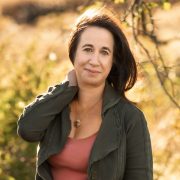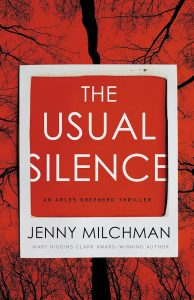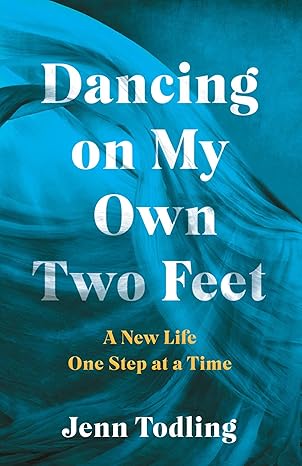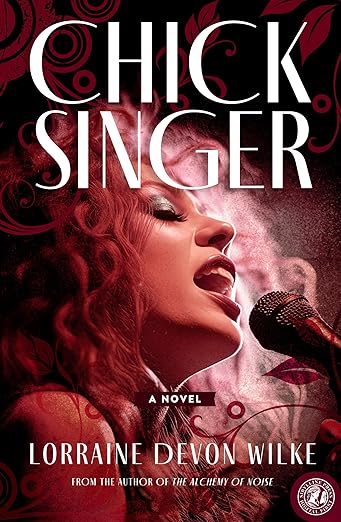The Real Life Making of a Fictional Psychologist
By Jenny Milchman
Content warning: mention of violence against animals
 I always wanted to be a writer. I was that kid with her nose in a book, sneaking away at sleepovers to pore over the new-to-me volumes on my friends’ shelves, treasure chests each and every one.
I always wanted to be a writer. I was that kid with her nose in a book, sneaking away at sleepovers to pore over the new-to-me volumes on my friends’ shelves, treasure chests each and every one.
When I was in college and studying creative writing, my parents asked me what my plan was for after I graduated. That was fine because I had a great plan. I was going to be a poet and live in the woods in a log cabin. I might’ve kind of thought I’d also build the cabin. You know, like Thoreau. (Did Thoreau have any part in building Walden? I don’t actually know. Note to self: Google. Hey, look at that, he did). K, that was not going to be me. I’d hardly ever picked up a hammer.
So I became a psychotherapist instead. It was a worthy alternative as I’d always been interested in talking with people. Psychotherapy is ultimately about helping people shape their lives into cohesive narratives; I was listening to people’s stories instead of writing them myself. And in some instances I was helping people change their lives for the better, which is an addictive kind of joy.
Then one day a woman brought her five year old daughter in to see me. I was working in a rural community mental health center and specialized in treating children. I’ll call this young girl Lucy, which is the name of a character in my first never-to-be-published novel.
Lucy came for therapy because she had committed a shocking act. The content warning applies here, although this piece will not contain details. I tend to stay away from gory and graphic in my writing (unless there’s a bad guy everyone wants to see taken down. Then I give it to ‘im).
At age five, Lucy had just killed the family pet, a bird.
Writing is a way of processing our experiences, of filtering and distilling them into a coherent whole. From a journal entry to a published magnum opus, that is the essence of what the writer is doing.
As I began working with Lucy, it was my job to find out several things. First and foremost, having displayed that level of violence, was Lucy a danger to herself or others? Would this kind of behavior erupt again?
Psychotherapists have different ways of answering that question—primarily interviews with the child, family members, and other people in the child’s life, such as teachers. As a clinical PhD. student I was also able to administer psychological tests to try to get at Lucy’s thought processes. And as a writer—or former writer—or what was I exactly now?—I had an interest in poetry therapy and did some of that with her.
I also sat down and began writing for the first time since college. Because my life resembled a psychological suspense novel and mystery rolled into one, that was the form my book took. First novels are often semi-autobiographical; my version was never to be published.
But writing it was sheer joy, a relief and respite from the difficulties of my job.
In life, as opposed to fiction, we don’t get to see the whole arc, the end to which the evolution of the characters and the events of the plot are headed. It’s the writer’s job, and I would argue our greatest joy, to make sense of all that. To impose some sense on it and give it form.
While working with Lucy, I was looking for a smoking gun, THE reason a child who stood lower than my waist would commit such a horrible act. My own biases and preconceptions came to the fore; as did my supervisor’s when he pushed the supposition that Lucy was the victim of abuse.
That did not turn out to be the explanation. Ultimately I had to grapple with the fact that there was no single explanation, but instead a whole host of entanglements, including an enabling grandfather, a mother who was afraid of setting limits, and a bevy of other reasons.
During this time, I began writing my second novel (also never to be published—there’s a theme here) and this one garnered me a literary agent.
By the time a book of mine sold, Lucy was a teenager and doing quite well. I still saw her from time to time for a check in session.
But it was time for me to stop practicing psychotherapy. I had two children by then, and my original, albeit morphed and changed (perhaps a little bruised and battered) dream of being a writer had never been stronger.
During naptimes and nighttime, I lost myself in writing the stories I had discovered through my first career.
Twisty tales of triumph and redemption over inexplicable forces.
One day, a publisher reached out to my agent.
Given my professional background, had I ever considered writing a series that would feature a psychologist as the main character?
To say that this offer came at the right time is like saying that dangling a rope to a person who has just fallen off a cliff comes at the right time.
This was a book I needed to write.
Forces were coalescing, in the world and in my life and my mind, that made the creation of psychologist Arles Shepherd both an antidote and an anthem.
She’s a woman who survived a traumatic past and goes on to help children and families escape victimizers.
There is so much violence around us now that hers was a story resonating for me on a lot of deep levels.
In The Usual Silence Arles has lived with a monster as a child, and as is the case with monsters, they never really leave us, no matter how much we grow. When a relic from Arles’s past brings a young boy into her orbit, Arles vows to do better by him than she was able to do for herself.
Here was the chance I didn’t—couldn’t—have with Lucy. To craft a story so that everything makes sense and comes out as it should. Not with an easy happy ending—Lucy had to really work for hers, and so do the characters in my book. People don’t often get happy endings in life. Life goes on and on, a series of multiple dyings and fertile beginnings.
Whereas when I came to the words The End in my novel, I had the right ending, the one we all long to see.
—
Jenny Milchman is the Mary Higgins Clark Award–winning and USA Today bestselling author of the psychological thrillers Cover of Snow, Ruin Falls, As Night Falls, Wicked River, and The Second Mother. Her work has received praise from media ranging from the New York Times to the San Francisco Journal of Books; earned spots on Top 10 lists from Suspense Magazine to the Strand Magazine; made Best Of lists from PopSugar to PureWow; and garnered starred reviews from Publishers Weekly, Booklist, Library Journal, and Shelf Awareness, in addition to numerous other mentions. Before turning to fiction, Jenny earned a graduate degree in clinical psychology and practiced at a rural community mental health center for more than a decade. She lives in the Catskill Mountains with her family. For more information, visit www.jennymilchman.com.
visit www.jennymilchman.com.
THE USUAL SILENCE
 A psychologist haunted by childhood trauma must unearth all that is buried in her past in this twisting, lyrical novel of suspense by Mary Higgins Clark Award–winning author Jenny Milchman.
A psychologist haunted by childhood trauma must unearth all that is buried in her past in this twisting, lyrical novel of suspense by Mary Higgins Clark Award–winning author Jenny Milchman.
Psychologist Arles Shepherd treats troubled children, struggling with each case to recover from her own traumatic past, much of which she’s lost to the shadows of memory. Having just set up a new kind of treatment center in the remote Adirondack wilderness, Arles longs to heal one patient in particular: a ten-year-old boy who has never spoken a word—or so his mother, Louise, believes.
Hundreds of miles away, Cass Monroe is living a parent’s worst nightmare. His twelve-year-old daughter has vanished on her way home from school. With no clues, no witnesses, and no trail, the police are at a dead end. Fighting a heart that was already ailing, and struggling to keep both his marriage and himself alive, Cass turns to a pair of true-crime podcasters for help.
Arles, Louise, and Cass will soon find their lives entangled in ways none of them could have anticipated. And when the collision occurs, a quarter-century-old secret will be forced out of hiding. Because nothing screams louder than silence.
BUY HERE
Category: On Writing




























